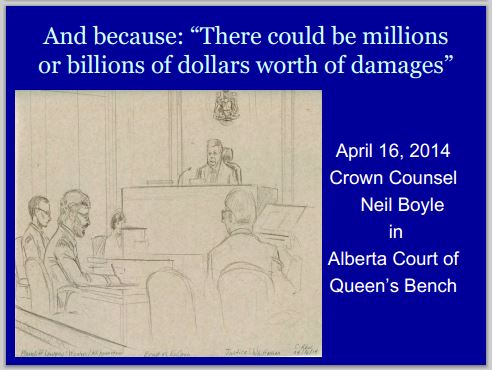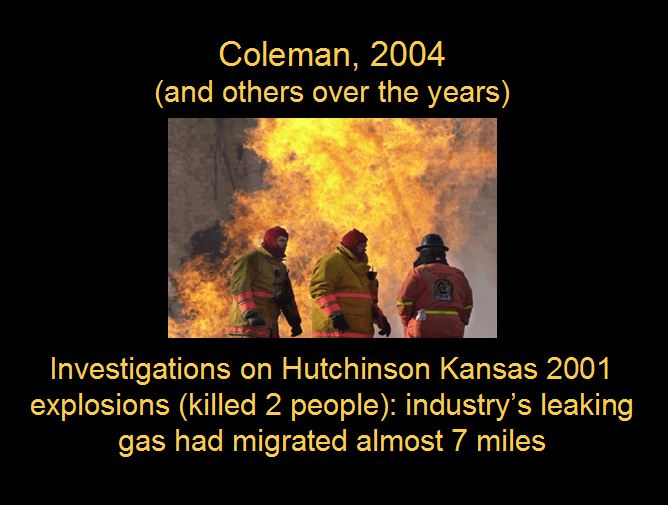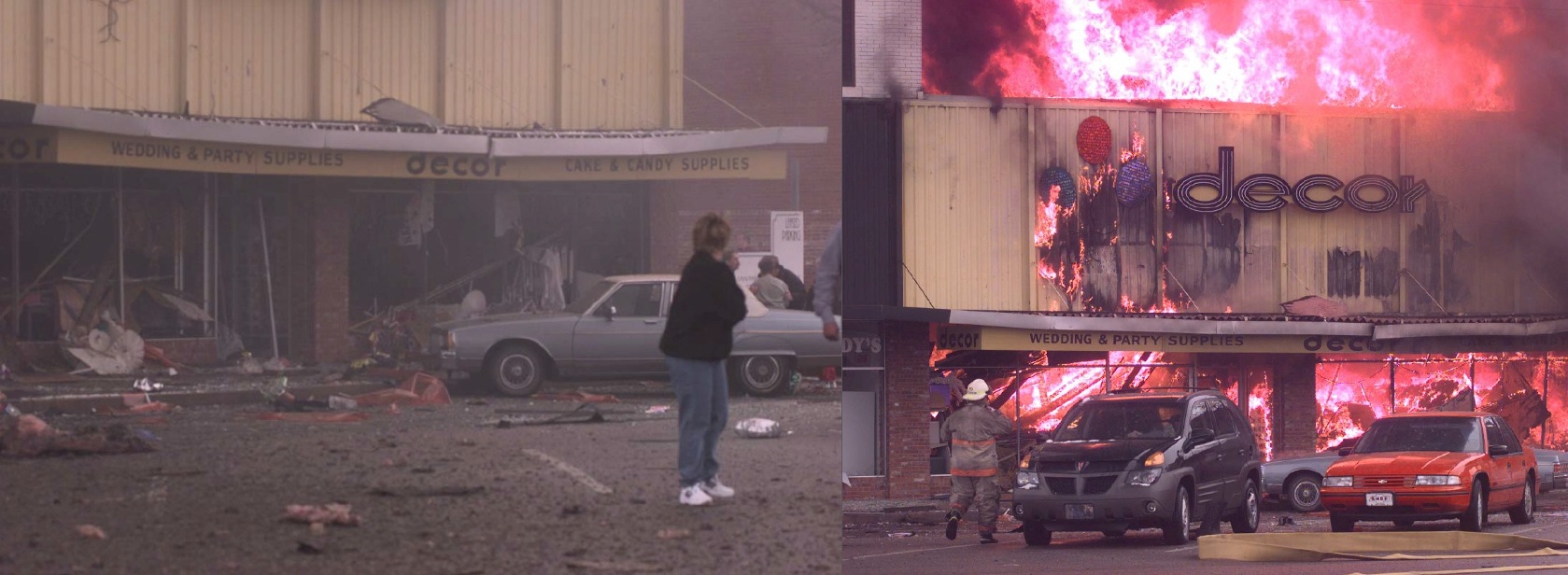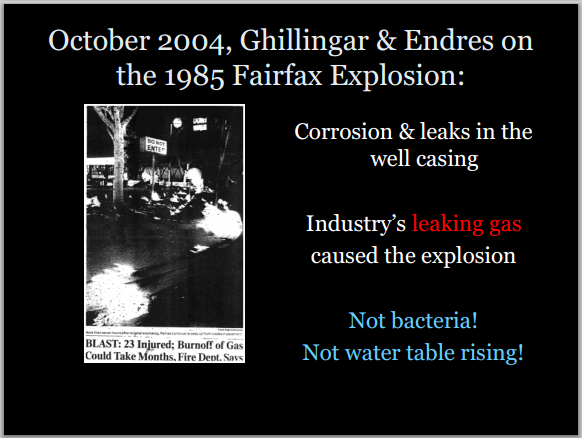Oil boom and fracking cause spike in energy industry workplace deaths by Business Insurance, July 6, 2014
Employers, safety professionals and insurers are working to promote workplace safety as the fast-growing energy industry tries to stem fatalities among employees who work long hours while operating heavy machinery and vehicles. … An energy industry high of 142 fatalities was reported in 2012, according to the latest data available from U.S. Bureau of Labor Statistics.
Hydraulic fracturing or fracking, an oil and gas extraction technique, is “very high-hazard work,” said David Michaels, the U.S. Labor Department’s assistant secretary of occupational safety and health in Washington. “It involves heights, it involves hydrocarbons coming out of the Earth at huge pressure, and probably the most hazardous component is the increased use of vehicles.”
…
Inexperienced operators aren’t used to driving water trucks, salt trucks or other types of vehicles that support a drilling operation, and driver fatigue is common among employees who are “working 12-, 13-, 14-hour shifts with overtime and … are falling asleep at the wheel,” Mr. Hill said. [Woody Hill, vice president of safety services at Texas Mutual Insurance Co. in Austin.]
North Dakota reported the highest incidence work-related fatalities among states with an energy industry presence. In 2012, its fatality rate in the mining and oil and gas extraction sector was 104 deaths per 100,000 workers, six times the industry’s national rate of 15.9, according to an AFL-CIO report released in May. More than half of all workers who died in North Dakota in 2012 were killed in transportation-related accidents, said Eric Brooks, area director for the U.S. Occupational Safety and Health Administration in Bismarck, North Dakota.
…
When the Austin, Texas-based insurer announced the campaign and workshops last year, Mr. Hill said Texas Mutual’s claims found that driving-related accidents accounted for nearly 60% of oil and gas industry fatalities. … “You can train, train, train and have the most defensive driver, but if they’ve worked 20 hours and now they’re driving three or four hours … there’s no amount of defensive driving that will fix that problem.”
…
Other industry hazards include falls, being struck by equipment, electrical fires and explosions, experts said.
…
Unlike coal mining, which is regulated by the U.S. Mine Safety and Health Administration, “the oil and gas industry is largely unorganized,” Ms. Seminario said, adding that it’s up to the industry to call for more controls. [Why not say it’s up to communities and the families with lost loved ones, and regulators?]
“It’s not as though OSHA and (the National Institute for Occupational Safety and Health) aren’t doing anything,” she said. “They are. And it’s not as though the industry isn’t doing anything. They are. But clearly the situation is one that demands a higher level of attention because the status quo is not acceptable.” There are only eight OSHA compliance officers covering North and South Dakota, according to the AFL-CIO report. Because of limited resources in the field, Mr. Brooks, the OSHA official in North Dakota, said other regions often are called upon for “additional resources to make sure we respond appropriately.” The goal is to be on-site within one day of an incident, he said. [Emphasis added]
[Refer also to:
July 2, 2014: What’s Missing from Canada’s Academic Fracking Debate? “The Gritty Truth.”
What happened to all those jobs fracing creates? Encana bets against frac jobs
Oil well near Tioga, North Dakota, goes out of control during hydraulic fracturing
May 6, 2014: The Big Lie Continues – in Parliament, Even after release of frac report by Council of Canadian Academies [And in the report itself]
February 1, 2014: Fracking Injuries, deaths and dangers for workers and communities
According to the Institute for Southern Studies, approximately 435,000 workers are employed by the U.S. oil and gas extraction industry, with half working for well services companies that conduct hydraulic fracking. Fracking workers are more than seven times more likely to die on the job than other types of workers. The Institute also notes oil and gas field workers work an average 20 hour shift
Due to the inherently dangerous nature of fracking, these workers often face crippling injuries to their neck, back, knee, and shoulders, and are sometimes left paralyzed or die as a result of explosions, seismic activity or sinkholes that open with little or no warning. Some of the safety hazards that fracking workers regularly encounter include fatigue from working long shifts, being struck by moving equipment and high-pressure lines, and working in extreme temperatures and confined spaces. Doyle Raizner currently has a case (Perio v. Titan Maritime, LLC and T&T Marine Salvage, Inc.) where the worker’s leg was caught in a cable resulting in him being thrown 30 feet in the air and dropped on the beach. Accidents in the oil and gas industry can be catastrophic and fatal. Fracking makes an already dangerous job more dangerous due to the increased risk of seismic activity and explosions, as well as the long hours that often result in worker fatigue. …
Occupational deaths in the oil and gas extraction industry from 2003 to 2009 per 100,000 workers: 27.5
Number of times that rate exceeds the fatality rate for all U.S. workers: more than 7
Percent by which fatalities among oil and gas workers rose from 2003 to 2005, as the drilling boom accelerated: 15 …
Length of shifts in hours that oil and gas field workers are routinely pressured into working by employers who cite longstanding regulatory exemptions enjoyed by the industry: 20 …
Percent of the tested fracking sites where workers’ exposure to respirable crystalline silica exceed occupational health limits: 100 …
Percent change in the number of inspections at those work sites: -12 [Emphasis added]
House damage in central Oklahoma from the magnitude 5.6 earthquake in 2011. Research conducted by U.S. Geological Survey geophysicists suggests it was induced by injection into deep disposal wells in the Wilzetta North field. Photo Credit: Brian Sherrod, USGS.
Maddow shows incredible photos from explosive Texas ‘fracking’ accident
A lung injury caused by thermal burn deprived Mr. Mearns’ brain of oxygen.
August 9, 2013: Fracking ‘silence’ for life: Gag orders on children & censored government data
September 27, 2013: Alberta drastically under-reports workplace injuries
March 7, 2013: Lack of adequate procedures cause of Suncor rig blowout near Hudson’ Hope, Alberta
Two Children Dead After Water Truck Overturns on Sedan in Harrison County
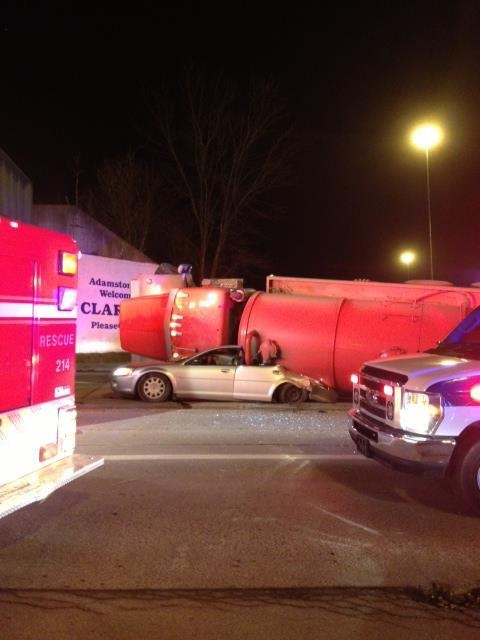
Man dies after explosion ”This is a dangerous business….”
CLIENT ADVISORY New Technology Creates New Insurance Issues for Oil and Gas Lease Operators by Pascal Ray and the AmWINS Energy Specialty Practice
This shift to unconventional drilling and heavy multi-stage fracking has created new insurance issues for the industry:
• Increase in blowouts during the completion/fracking stage.
• Increase in blowouts involving communication between multiple wells.
• Increase in blowouts caused by casing/cementing failure.
• Increase in blowouts caused by surface events.
In addition to these blowout trends, we are seeing:
• An increase in blowouts involving producing wells.
• An increase in blowouts involving plugged and abandoned wells.
While fracking has been the cause of some of the blowout increases, producing wells and plugged and abandoned wells are experiencing underground blowouts from the failure of old and corroded casings. These underground blowouts can lead to cratering events that are costly and difficult to bring Under control. Underground blowouts can be much more expensive to bring under control than surface blowouts, yet many operators do not insure these wells or have high enough limits for them. Another issue that has arisen from fracking is an increase in surface and water table pollution events that can result in expensive claims and erode the Control of Well limit rapidly, if not entirely. As a result, many of the blowouts that are now occurring are under-insured. [Emphasis added]
February 10, 2013: Workplace Deaths Drop – But not in the Oil Industry
2012: Ontario Assessment Review Board Reduces Methane Contaminated Property’s Taxation Value to Zero
December 3, 2102: First Study of Its Kind Detects 44 Hazardous Air Pollutants at Gas Drilling Sites
September 2012: Safety Rules for Fracking Disposal Wells Often Ignored
During 2003-2008, 648 oil and gas extraction workers were fatally injured on the job, resulting in an occupational fatality rate of 29.1 deaths per 100,000 workers – eight times higher than the rate for all U.S. workers.
2011: Fracking grievances aired at Eagle Hill
2011: Calmar Homeowners Suing Town of Calmar and Aztec Home Sales Inc over Leaking Wells
2011: Imperial Oil leaking natural gas wells a nightmare for homeowners near Edmonton
February 16, 20111: Gas-well ordeal finally ends well
Forty-three households were involved in the class-action suit…. A separate amount was given to Mr. and Mrs. Payne, whose house on English Drive was lifted off its foundation by the explosion. Ohio Valley Energy and other companies involved with the drilling also paid off Nationwide Insurance, which had the coverage on the Paynes’ home.
Nationwide Insurance: Fracking Damage Won’t Be Covered July 12, 2012
B.C. Oil and Gas Commission lacks ‘transparency’ on fracking violations
Fracking blowout report released by ERCB
Worker hurt in northern Alberta explosion
Energy lobbyist, Ex Encana/Cenovus VP Gerard Protti, appointed as Alberta’s new top energy regulator
Accident at Encana well in Colorado kills 1, injuries 3
Jury awards $4.1M to injured Rifle rig worker, Tesco, subcontractor for Encana, expected to appeal
Encana Reaches Compensation Deal for Sour Gas Leak
$250000 in community safety projects following Encana deadly sour gas leak
Failure Investigation Report: Failure of Piping at EnCana Deep Frac’d Swan Wellsite A5-7-77-14 L W6M
EnCana Corporation facing criminal charges
Drilling regulators pull double duty as industry promoters
Fire at gas well near Gleichen Alberta injures worker
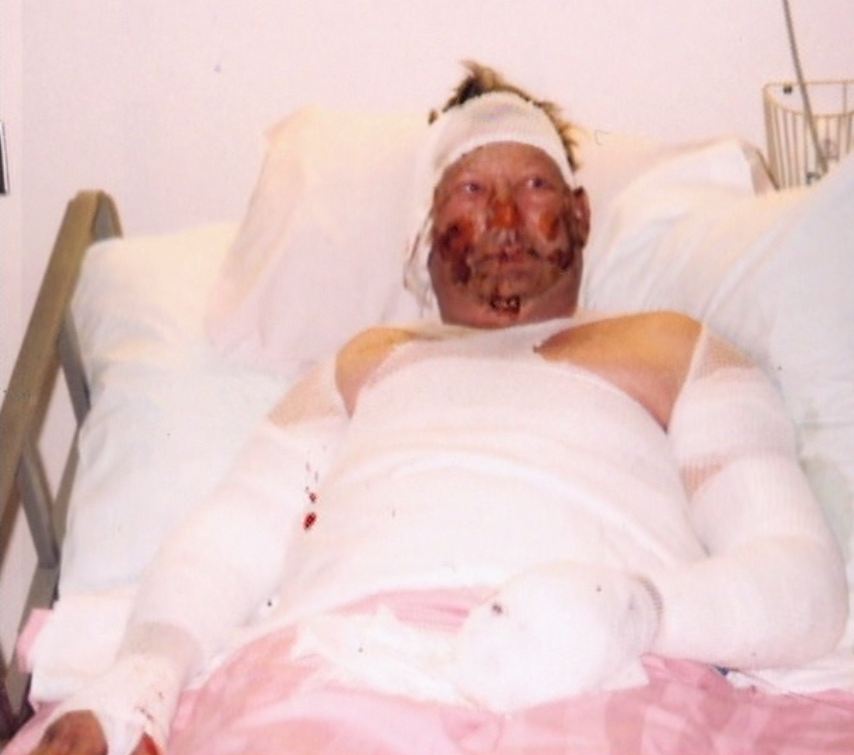
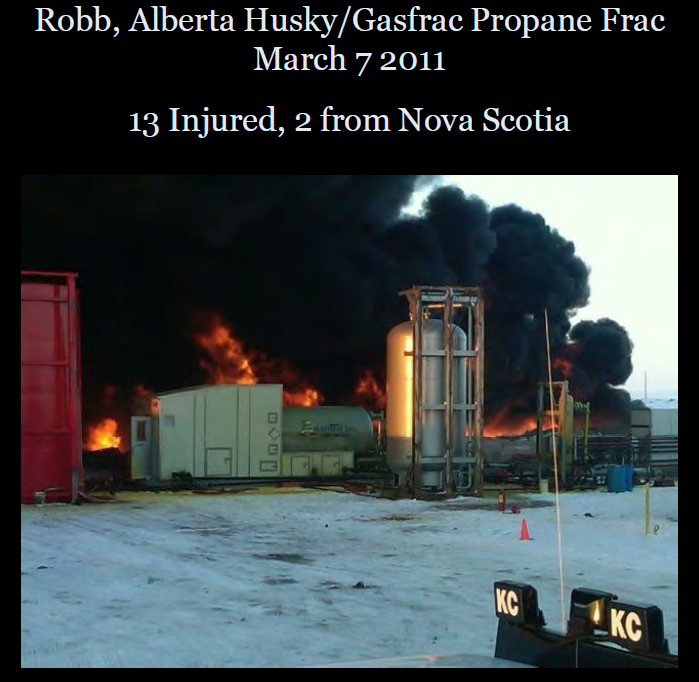
Slide from Ernst Presentation UK / Ireland 2013 Frac Speaking Tour
Oil workers suffer burns in blast by Canada’s Occupational Health and Safety Magazine, March 2011
Drillers Silence Fracking Claims With Sealed Settlements
2010: Leaking gas well forces families out in Calmar neighbourhood
Source: Hutchinson Gas Explosion – Unraveling a Geologic Mystery by Kansas Geological Survey, University of Kansas
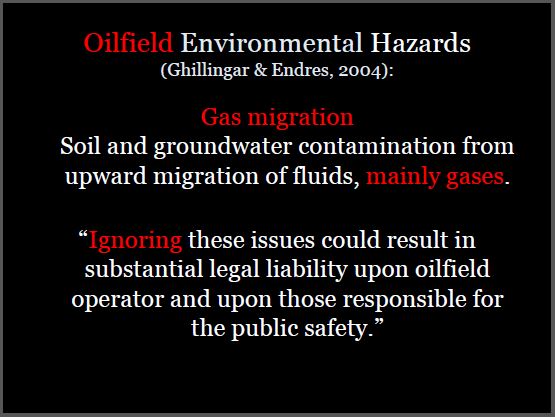
1991: Evironmental hazards of urban oilfield operations
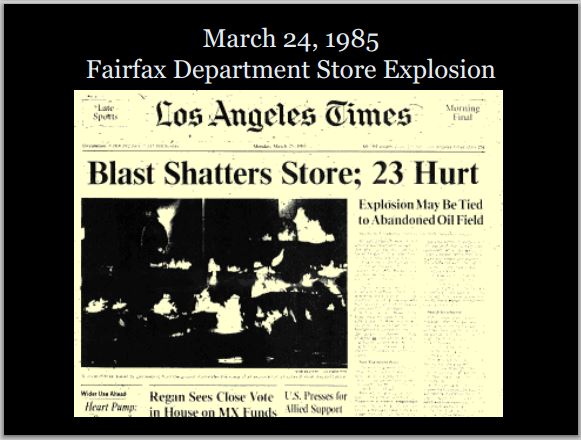
Slides from Ernst presentations

